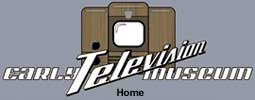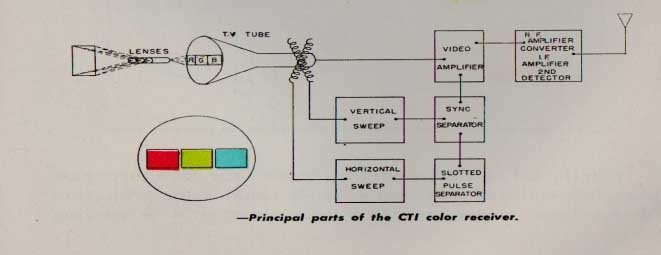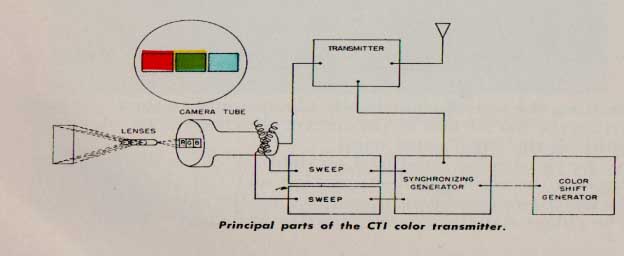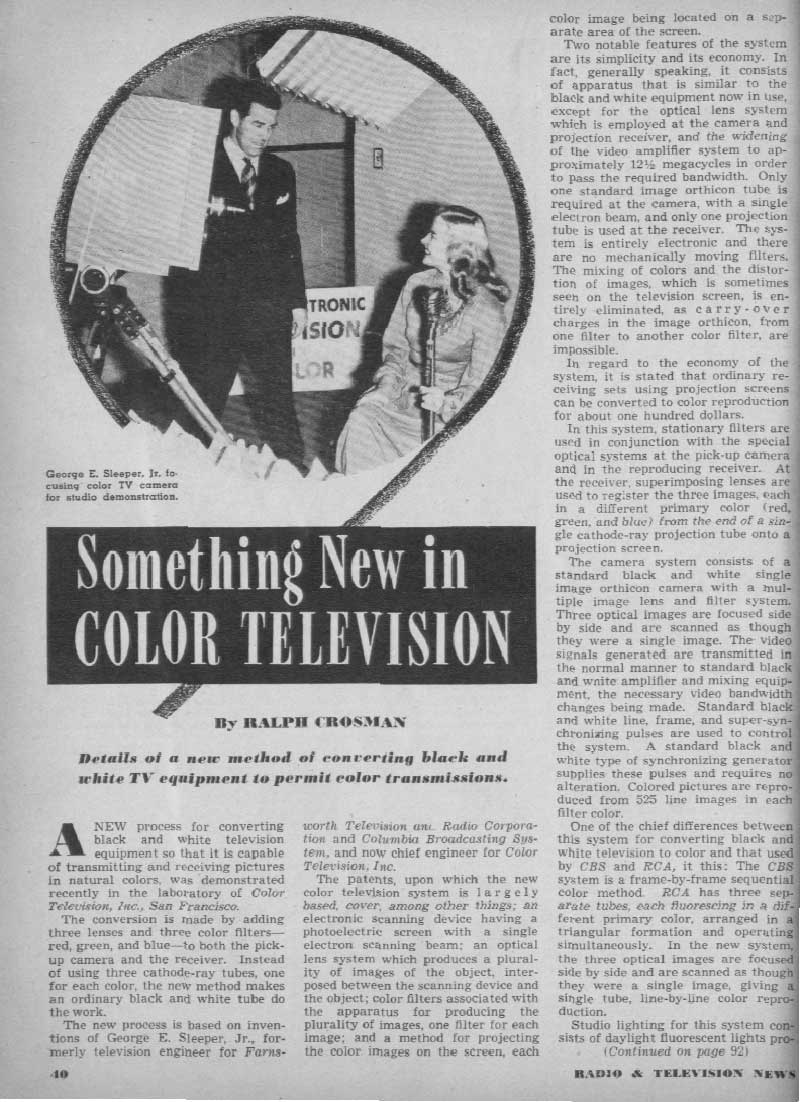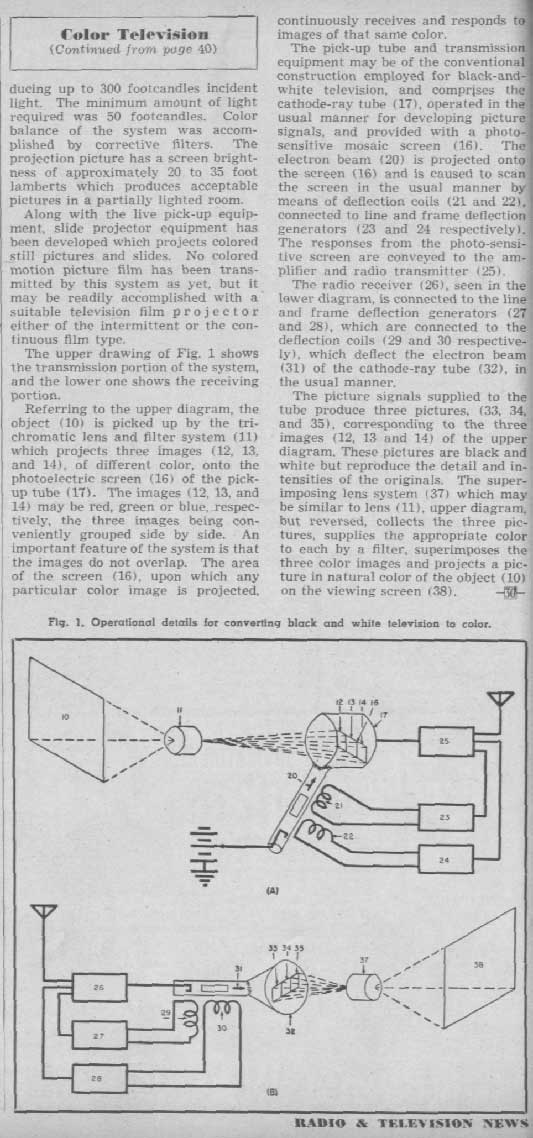Early Color Television CTI/Sleeper Color System (1947)Another scanning method was used by Color Television Inc. There was a change of color not for each successive filed but for each line. This system used 525 lines per picture frame and used 60 interlaced fields and 30 complete frames per second. The color switching rate became the same as the line frequency, 15,750 per second. In the CTI system, each horizontal line in any one field was traced in a primary color which was different from colors in the lines above and below. In each complete field one-third trace the blue image, one-third trace the green image, and one-third trace the red image. The CTI signal had the same characteristics as a standard b&w signal except for the color synchronizing. There were 525 lines per frame, 30 frames and 30 complete pictures per second. One frame consisted of two interlaced fields, each with 262 1/2 lines, reproduced at a frequency of 60 per second. The CTI video signals for the three color images were transmitted one after another in time. In the receiver, the three side by side sections of the picture tube screen have phosphors which produce red light, green light, and blue light. The three color band images passed through a lens system which focused them superimposed on a projection type viewing screen. The lens were adjusted so that lines of different colors were traced in between those of other colors. The result was a picture in which the three color bands combined to reproduce all of the hues of the original televised image. (Information and pictures courtesy of Rick Plummer)
|
